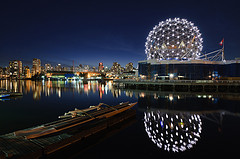Jason Gerbsch Approximately 220 words
jg33@geneseo.edu
INTD 105-19: Scientific Writing
In his essay, “The Trouble with Wilderness”, Cronon states that the American wilderness is not very natural, more so a construct of man. He makes two points supporting his view of a constructed wilderness, romanticism and the frontier. During the colonial eras and the beginning of America, the term wilderness was a word that instilled terror. Romanticism changed this early on by changing the concept of wilderness from a place of terror, to a place of sacredness. Romantics tied the wilderness and religion together, using faith to describe the wilderness as places of heavenly beauty and places to be close to God. The frontier aspect painted the wild as a place of not only religious significance, but also a place for experiencing what it meant to be an American. Both movements in American history led to the protection of nature not for the sake of protecting it, but for creating places where people can go to abandon their homes in civilization for a time in exchange for a false “home” in nature, where they truly “belong”.
This idea of falsifying nature in order to appease our desire to separate ourselves from civilization I can see with Sturges Hall. The building, a sign of civilization, covered on ivy in order to appear “natural.”
